An ill-fitting diaper – one that’s either too small, too big, or not fastened/fitted properly – can turn a routine diaper change (which already has most of us on edge) into an unexpected and unpleasant nightmare.
Not just for the baby, but for the parent, as well.
For the baby, diapers that don’t fit properly often result in leaks, spills, blowouts, rashes, chafing, irritated skin, restricted movement, compression marks, difficulty sleeping, and an increased risk of infections. And for the parent – well, let’s just say it results in an unhappy baby and a mess no one wants to clean up.
RELATED: What Size Diapers Should I Stock Up On Ahead of the Arrival of My Baby?
Don’t worry – all parents have been there before.
The truth is there’s an art to changing your baby’s diaper – a science, even. And, while most parents learn this through experience, we’re going to give you the inside scoop – because we’re all in this together!
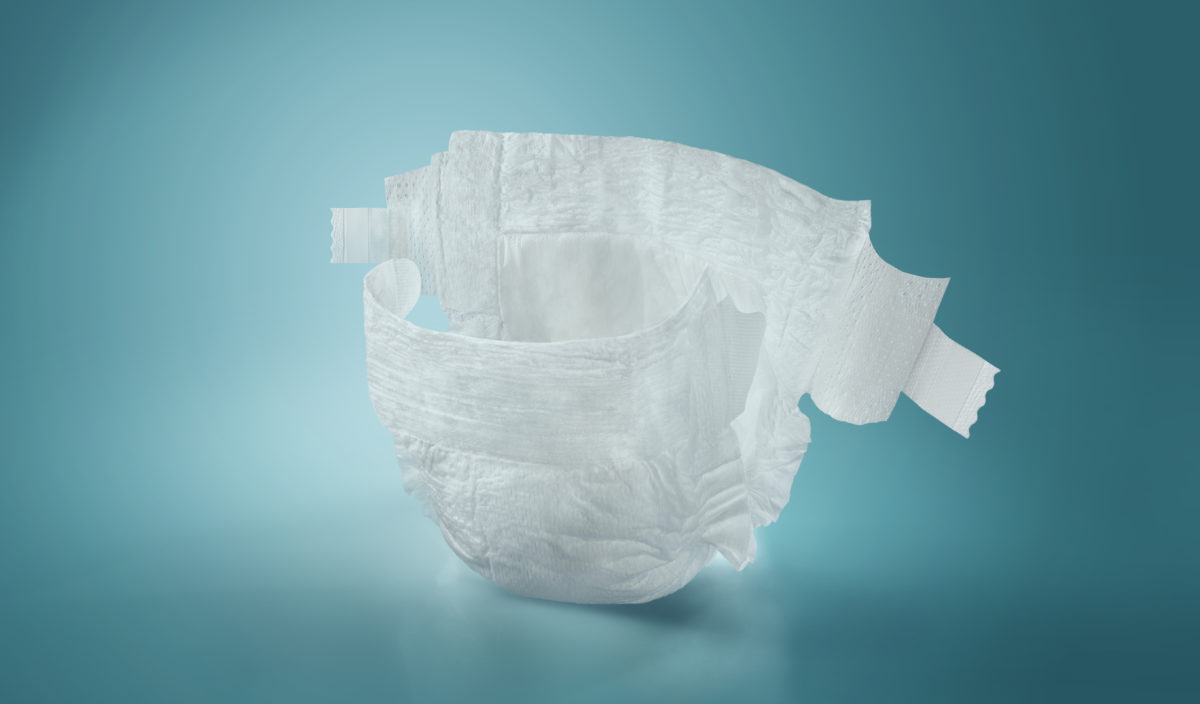
Diaper Sizes Vary By Weight, Not By Age
One of the unique aspects of selecting the right diaper for your baby is that, unlike clothes, which typically vary by age, diaper sizes are generally determined by weight. The reason why is because all babies grow at different rates – a diaper that fits one six-month-old baby might not fit another six-month-old baby.
So, what size does your child need
The best way to determine the right diaper size is by looking at the manufacturer’s box. Most brands have a size chart with up to 10 different sizes – each with different weight recommendations and ranges.
Of course, you’ll need to know your child’s weight first. This can be determined by your doctor or by using a scale – an easy method is to step on a scale while holding the baby, and then subtract your weight.
For example, here’s the size chart for both Pampers and Huggies:
Size P1 diapers (less than six pounds), size N diapers (less than 10 pounds), size 1 diapers (8-14 pounds), size 2 diapers (12-18 pounds), size 3 diapers (16-28 pounds), size 4 diapers (22-37 pounds), size 5 diapers (27+ pounds), size 6 diapers (35+ pounds), and size 7 diapers (41+ pounds).
For the most part, these charts will tell you everything you need to know.
But if you buy anything other than Pampers or Huggies, always check the box before purchasing. While the chart above is considered the ‘gold standard’ by several top brands, some companies have their own size charts and guidelines. Checking while at the store will save you from having to make another trip.
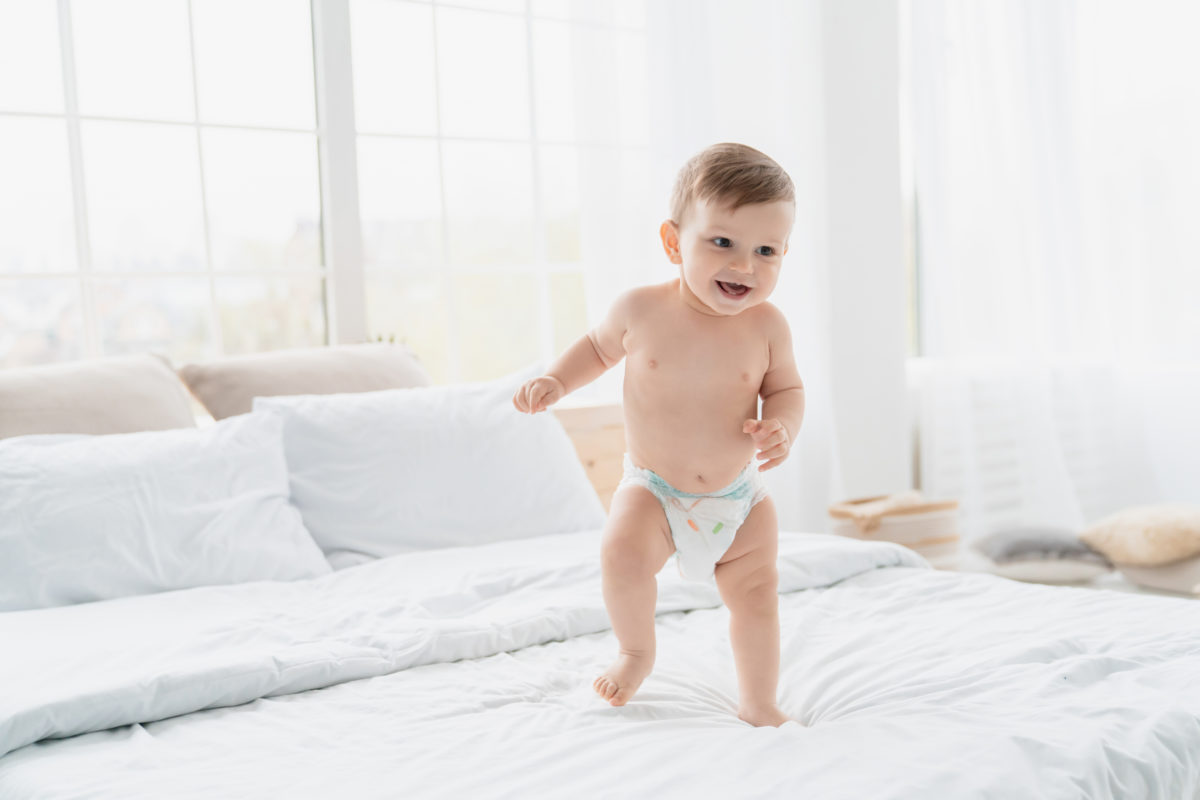
How Should a Diaper Fit?
Just following the size chart isn’t always enough – the truth is, you never really know if a diaper is going to fit properly until you put it on your baby. Only then can you asses how it fits, and if it’ll work as intended.
So, what is the perfect fit for a diaper?
A well-fitting diaper is akin to a hug from mama bear. You want it to be snug, yet comfortable, but with enough room for movement – without the risk of leaks or marks on the baby’s delicate skin, of course.
It’s all about finding that healthy balance.
The waistband shouldn’t be stressed, the fastening tapes should fit naturally, it should cover their entire bottom, you should be able to fit two fingers under the waistband, and it should be positioned just below the belly button. Perhaps most importantly, your baby should approve and show no signs of discomfort.
In essence, the perfect diaper fit is one that adapts to your baby’s unique shape and needs, providing a secure, comfy base that supports all the milestones of babyhood, from the first smile to the first steps.
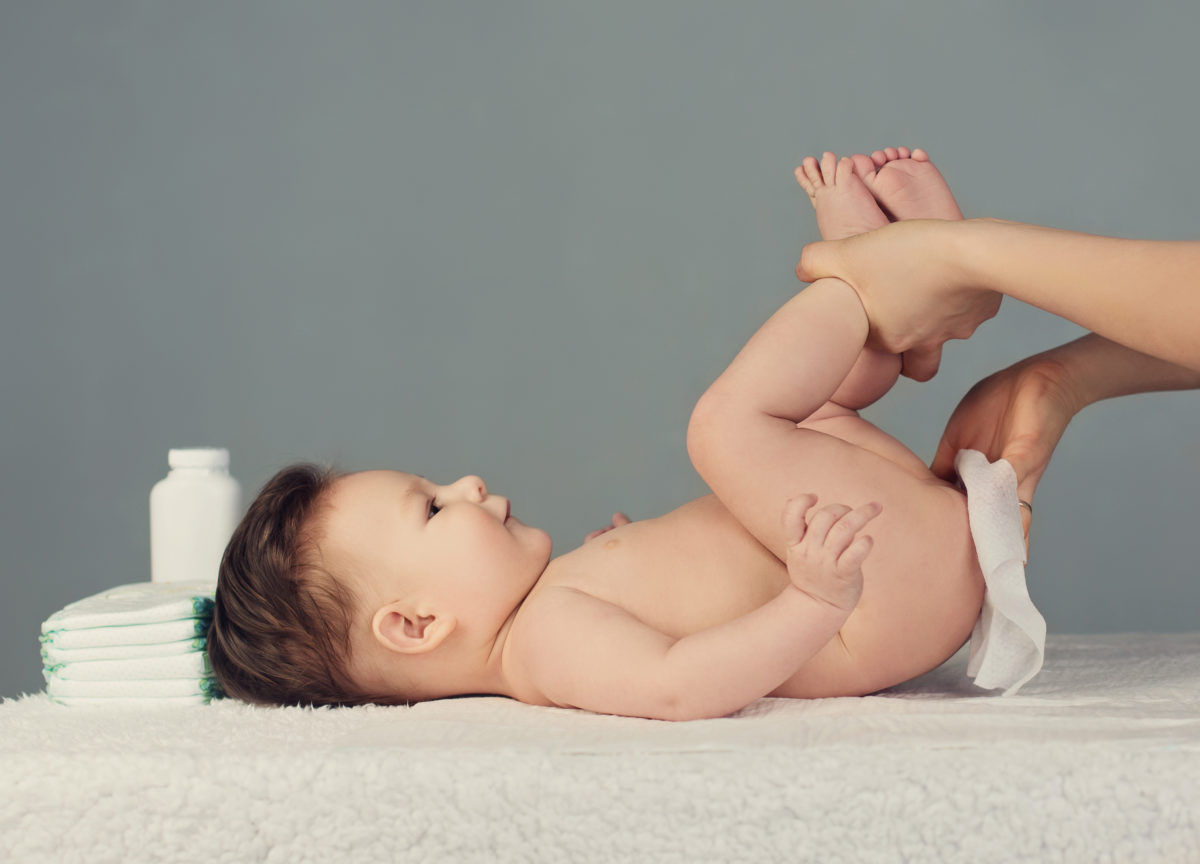
4 Signs It’s Time to Change Your Baby’s Diaper Size
Every baby is different – and size charts, while they do help, aren’t the most reliable thing in the world. Just as a budding plant eventually requires a bigger pot or graden to grow and thrive in, your baby will eventually need a bigger diaper that fits their changing shape and size – or else they will grow out of it.
In fact, you’ll end up changing diaper sizes every few months.
The general rule of thumb is to start considering sizing up once you’re two pounds away from the current size’s maximum – which usually equates to the next size’s minimum. If you were between size 1 (8-14 pounds) and size 2 (12-18) diapers, start considering sizing up at the 12-pound mark, but only if needed.
This is where your pristine judgment comes into play.
When in-between sizes, parents need to keep an eye out for warning signs of an ill-fitting diaper. Don’t worry – we’re going to share with you four of the most common signs that it’s time to move up a size.

4. Frequent Diaper Leaks and Blowouts
Diaper leaks and blowouts are bound to happen from time to time, but parents should grow wary if they start happening in bunches. If this sounds like your child, then it might be time to consider a bigger diaper size – or, at the very least, double-check that the diapers are being fastened and positioned properly.
So, what are diaper leaks?
Diaper leaks occur when urine or liquid stool escapes the confines of the diaper – either through the leg holes or the waist. This can happen for several reasons – including a diaper that’s too big or too small, not changing the diaper often enough, a diaper that’s not positioned correctly, or one that’s not of high quality.
And then you have blowouts…
Blowouts, on the other hand, are a little more aggressive – and harder to clean. They refer to instances where stool is expelled with such force, or in such quantity, that it breaches the diaper’s boundaries, typically at the back or sides. The good news is most diapers have extra coverage to prevent this.
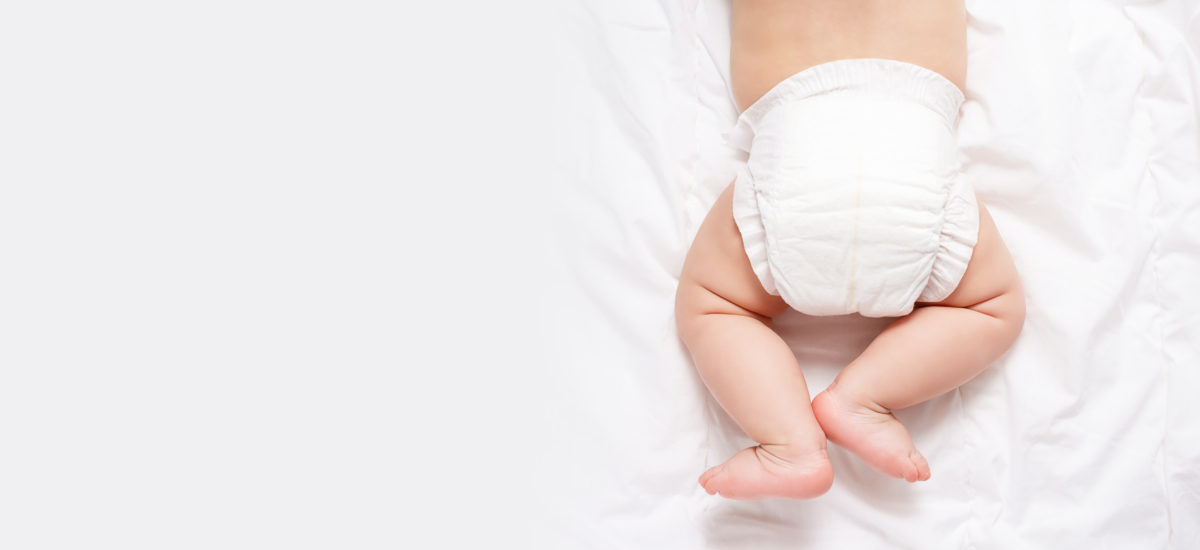
3. Red Marks Along the Thighs or Waist
Red marks from a diaper – either along the thighs or waist – are a clear sign that the baby’s comfort needs to be addressed. These red marks represent irritated skin, which is usually a result of a diaper that’s too tight or too small. Going up one size should give your baby the extra room they need.
You should also be wary of diaper rashes.
Diaper rashes are characterized by patches of red, inflamed skin that may be warm to the touch, and in more severe cases, can include blisters, welts, or peeling skin. They’re a little more aggressive than the red marks explained above, but are also caused by an ill-fitting diaper or one that isn’t changed enough.
So, how do you get rid of red marks and/or rashes?
Preventing diaper rash involves keeping the area clean and dry, changing diapers frequently, applying barrier creams or ointments to protect the skin, and buying bigger diapers. If the red marks don’t go away or the rash worsens, schedule an appointment with your pediatrician – even if it doesn’t seem serious.
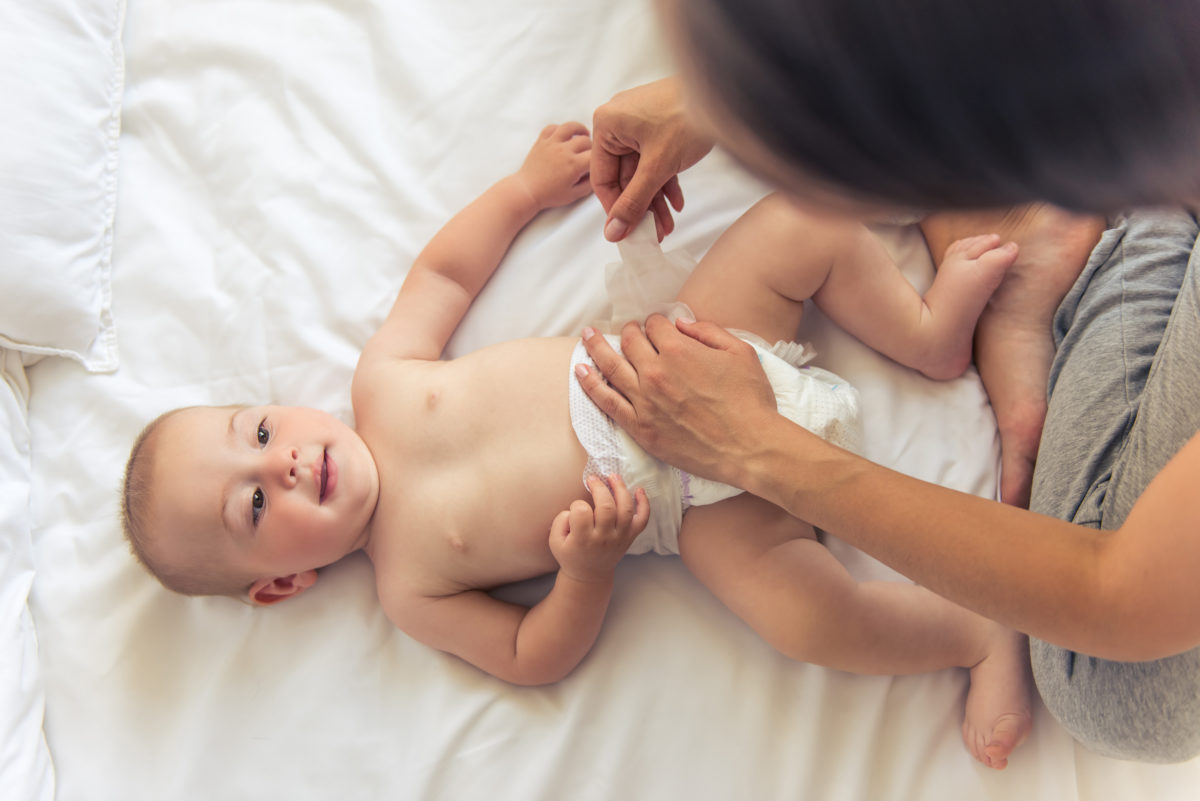
2. Stressed Waistband or Diaper Tabs
Assessing the waistband of the diaper can tell you a lot about whether it’s time to size up or not. Ideally, the waistband should sit just under your baby’s belly button – though some parents like to leave it at the belly button to account for dippage as the diaper fills up. If the waistband is stressed, then it’s too tight.
The diaper tabs are also very telling.
Diaper tabs are what allow you to tighten or loosen the diaper along the waist. If you find yourself having to force the tabs to connect, or if they disconnect frequently, then it might be time to size up. Usually, diaper tabs or waistbands that are too tight will be accompanied by red marks, as explained above.
The two-finger test is always a good indication.
The two-finger test involves placing two fingers under the waistband of the diaper after it has been put on the baby. If you can easily slide your fingers between the diaper and your baby’s skin, the diaper is snug enough to prevent leaks – but not so tight that it restricts movement and welcomes red marks or rashes.
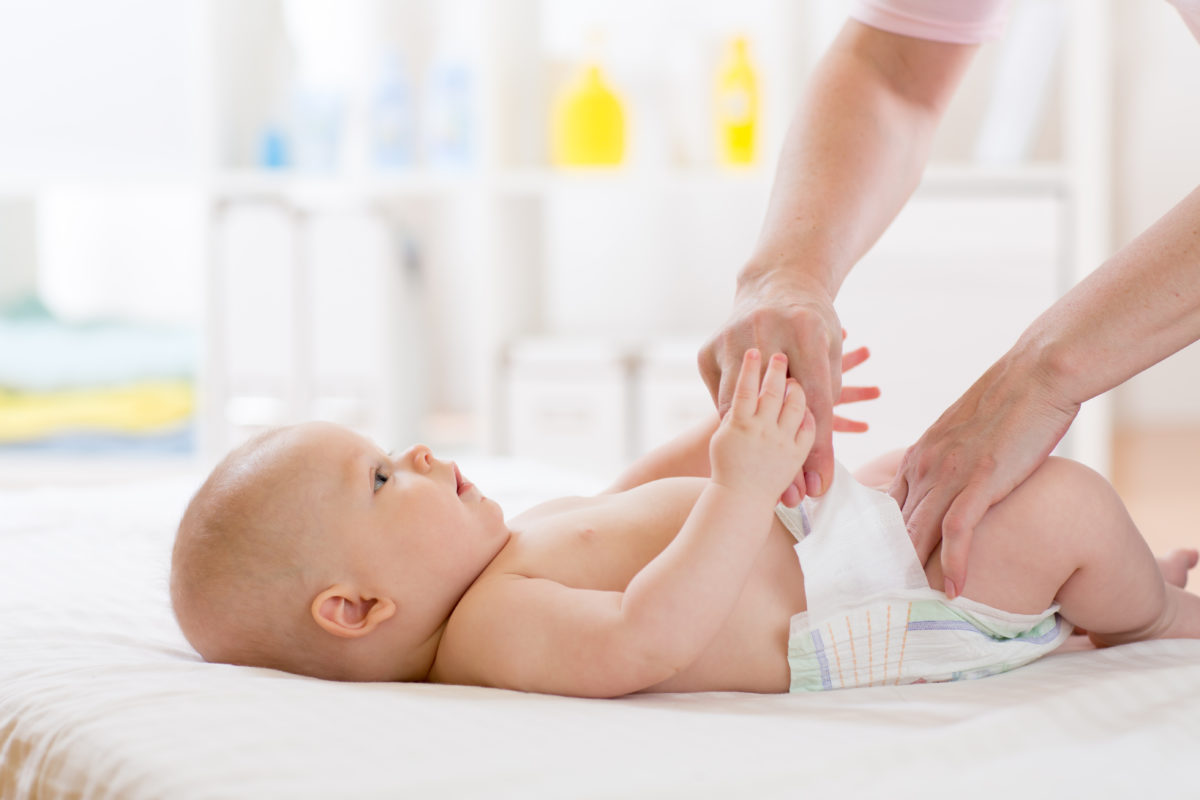
1. Obvious Signs of Discomfort or Distress
Most of us can agree that parenting would be a lot easier if our children could communicate what they need, how they’re feeling, and why they’re upset (or happy, for that matter). Unfortunately, it takes several years for children to develop those skills – leaving parents to play the guessing game most of the time.
They might not be able to tell us, but they can show us.
Some of the most common signs of discomfort or distress include pulling at the diaper, unusually fussy attitude (especially during or after a diaper change), difficulty sleeping or changes in sleeping patterns, and any of the obvious signs we discussed above (signs of chafing, red marks, rashes, etc.).
You should also analyze your child’s movements.
First off, do the eye test. If the diaper looks like it doesn’t fit or isn’t fully covering your baby’s bottom, then it’s likely too small and a size-up is necessary. This is also true if your baby is having a hard time moving freely and properly. At the end of the day, if you notice something awkward, don’t ignore it – investigate it!
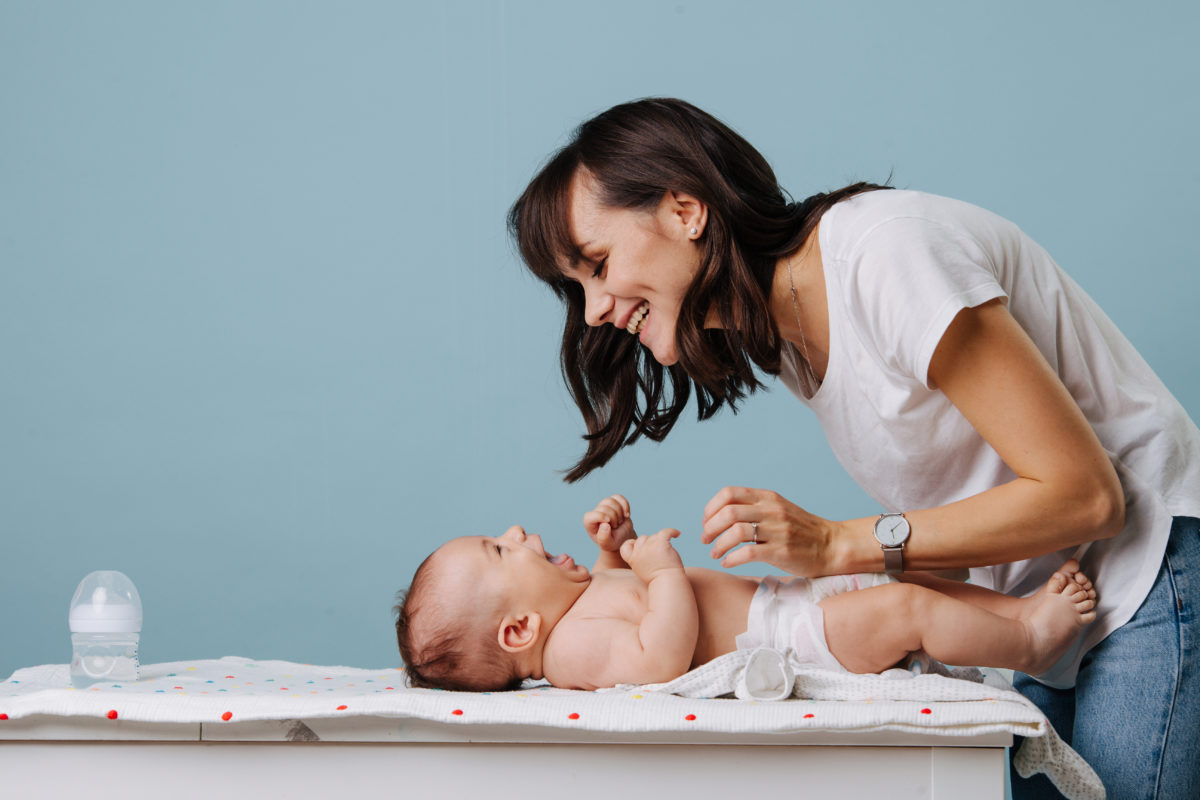
Don’t Hesitate to Ask for Help If Your’e Unsure About Something!
How many of you remember that clip of Paris Hilton learning how to change her then-one-month-old’s diaper for the first time? The clip aired during Season 2, Episode 3 of Paris in Love on Nov. 30, 2023, and it quickly went viral when fans started trolling Paris for not knowing how to change her son’s diaper.
But that’s not how I saw it.
What I saw was a first-time mother overcoming a fear most new parents have, and she was doing it with her sister, Nancy Rothschild, and nanny by her side. To me, there’s nothing more beautiful than that.
And for those who share that same fear, you’re not alone.
The truth is none of us really know what’s going to happen when we open a diaper – it could be anything, and that can be scary to think about! The mere anticipation of what awaits inside that tiny, seemingly innocuous piece of fabric can send shivers down the spine of even the most battle-hardened parents.
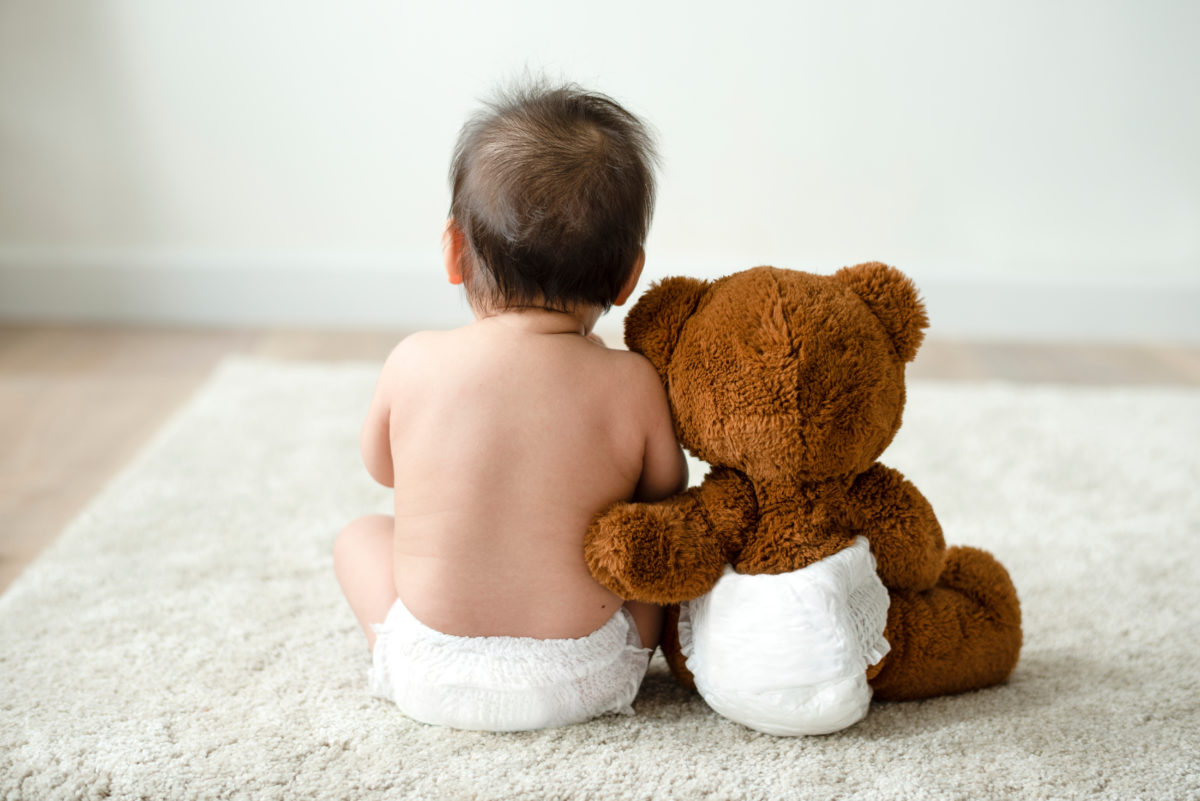
And then, sometimes, life throws us a curveball.
At least that was the case with one of our anonymous readers.
“If my newborn keeps peeing up the back of her diaper, does that mean it’s time to go up a size? I don’t know if it’s that brand. I’ve used the same brand for my other 3 kids and can count on one hand how many times they’ve peed up their back. She’s doing it at least twice a day,” the anonymous reader wrote.
Click here if you’d like to join in on the conversation.
See, even some of the most seasoned veterans in the parenting community face challenges when changing their baby’s diaper, so it’s nothing to be ashamed of – we’re all out here learning together!
With that said, there’s nothing more important than a diaper that fits properly. While that usually means following the size chart on the manufacturer’s box, those charts aren’t always perfect. If you start to experience frequent leaks or blowouts, red thigh marks, a loose fit, or discomfort – it’s time to size up!
YOU MAY ALSO LIKE: What Can I Do to Treat My Baby’s Worsening Diaper Rash?
And if you’re unsure about something, ask your doctor or our community of mom experts for help!
Contents
Mamas Uncut is THE online place for moms. We cover the latest about motherhood, parenting, and entertainment as well – all with a mom-focused twist. So if you're looking for parenting advice from real parents, we have plenty of it, all for moms from moms, and also experts. Because, at the end of the day, our mission is focused solely on empowering moms and moms-to-be with the knowledge and answers they’re looking for in one safe space.
